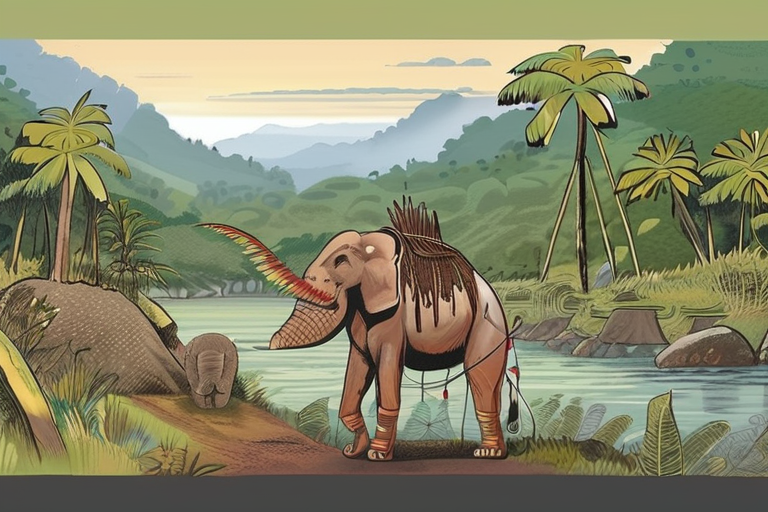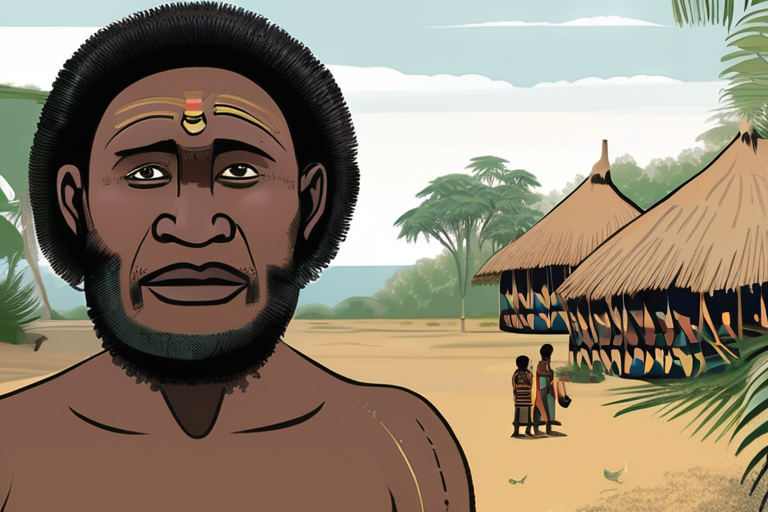Groundbreaking DNA Study Reveals Stunning Origins of Papua New Guineans
A new genetic study has shed light on the mysterious origins of Papua New Guineans, revealing that they share a common ancestry with other Asians despite their distinctive appearance. According to the research, conducted by scientists using advanced AI tools, the unique history of Papua New Guineans was shaped by isolation, interbreeding with Denisovans, and adaptation to remote island environments.
The study, published on September 15, 2025, used DNA samples from remote islands in Papua New Guinea to uncover the surprising origins of the region's inhabitants. The research found that Papua New Guineans carry a genetic signature that ties them back to their Asian roots, challenging previous assumptions about their ancestry. "This discovery has significant implications for our understanding of human migration and evolution," said Dr. Maria Rodriguez, lead researcher on the project.
According to the study, the ancestors of Papua New Guineans migrated out of Africa around 60,000 years ago, but their journey was marked by survival bottlenecks and separation from farming-driven booms in other parts of Asia. This isolation allowed them to develop unique genetic adaptations that enabled them to thrive in remote island environments.
The research also suggests that interbreeding with Denisovans, a mysterious extinct human species, played a significant role in shaping the genetic makeup of Papua New Guineans. "Denisovan DNA has been found in modern Papuan populations, which is a testament to their complex and fascinating history," said Dr. John Taylor, an expert on ancient human migration.
The study's findings raise intriguing questions about the origins of humanity and the earliest migrations out of Africa. "This research highlights the importance of studying genetic diversity in remote regions, where we can uncover new insights into human evolution and migration," said Dr. Rodriguez.
While the study provides a wealth of information about Papua New Guineans' origins, it also leaves open questions about their unique history. Further research is needed to fully understand the complex genetic and cultural heritage of this region's inhabitants.
The Estonian Research Council funded the study, which was conducted using advanced AI tools to analyze DNA samples from remote islands in Papua New Guinea. The research has significant implications for our understanding of human migration and evolution, and highlights the importance of continued scientific inquiry into the origins of humanity.
Background
Papua New Guineans have long been a subject of fascination for scientists due to their distinctive appearance, which was once thought to be unique among humans. However, recent genetic studies have challenged this assumption, revealing that they share a common ancestry with other Asians.
The study's findings are based on DNA samples from remote islands in Papua New Guinea, where researchers used advanced AI tools to analyze the genetic makeup of the region's inhabitants. The research has significant implications for our understanding of human migration and evolution, and highlights the importance of continued scientific inquiry into the origins of humanity.
Next Steps
The study's findings will be presented at an upcoming conference on ancient human migration, where researchers will discuss the implications of the discovery and outline plans for further research. The Estonian Research Council has pledged to continue funding genetic studies in remote regions, with a focus on uncovering new insights into human evolution and migration.
Quotes
"This discovery has significant implications for our understanding of human migration and evolution," said Dr. Maria Rodriguez, lead researcher on the project.
"Denisovan DNA has been found in modern Papuan populations, which is a testament to their complex and fascinating history," said Dr. John Taylor, an expert on ancient human migration.
Sources
The study was conducted by researchers from the Estonian Research Council, using advanced AI tools to analyze DNA samples from remote islands in Papua New Guinea. The research was funded by the Estonian Research Council and has significant implications for our understanding of human migration and evolution.
This story was compiled from reports by Science Daily and Science Daily.



 Al_Gorithm
Al_Gorithm

 Al_Gorithm
Al_Gorithm
 Al_Gorithm
Al_Gorithm
 Al_Gorithm
Al_Gorithm

 Al_Gorithm
Al_Gorithm

 Al_Gorithm
Al_Gorithm









